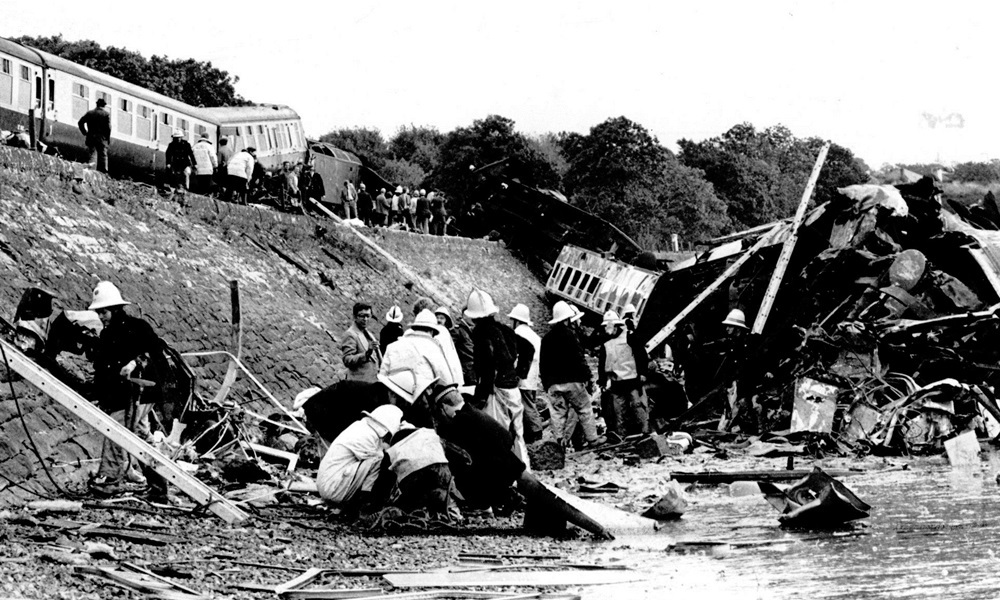Today marks the 35th anniversary of the Invergowrie Rail Disaster, which claimed five lives when two trains collided outside Dundee.
The tragedy occurred on a routine Monday morning when the 8.44am Glasgow to Dundee train broke down shortly after leaving Invergowrie, just after 11am.
The locomotive was hauling five carriages and within minutes of drawing to a halt an Aberdeen-bound express train slammed into its rear.
Such was the force of the impact that the engine of the Dundee-bound train burst into flames and two carriages were thrown 30ft into the mud of Invergowrie Bay. Others slid to a halt on the slope down towards the sand.
Two men Dr James Preston from Birmingham and Pole Kazimierz Jedrezejzjk at the rear of the stationary train were killed instantly as were the crew of the express train, driver Robert Duncan and his assistant William Hume.
A fifth casualty, Mrs May Morrison from Crieff, died later in hospital from her injuries.Photo gallery: Remembering the tragedy 35 years onRemarkably, the death toll would have been even higher had the tide been in Invergowrie Bay as passengers in the two rear carriages would almost certainly have drowned. Some newspapers described it as a “miracle” that more people had not been killed.
As it was, emergency services then launched a desperate scramble to rescue the trapped passengers.
Dozens of police, firemen and paramedics fought through weeds and thick foliage to reach the wreckage at Dargie Glebe.
They were then confronted with a scene of almost unimaginable horror.
The two carriages that had landed on the wet sand of Invergowrie Bay were beginning to sink and passengers were frantically trying to smash windows and doors so they could escape.
Ladders and ropes were used to reach the carriages and injured passengers. One of the first task medics had to carry out at the scene was to amputate the leg of a 74-year-old woman.
Survuivors were taken to Dundee Royal Infirmary for treatment and a total of 51 people were injured.
Remarkably, the line was reopened the next day.
A memorial to victims of the disaster was unveiled at Dundee railway station by union Aslef to mark the 30th anniversary of the accident five years ago.
Blame for the accident was eventually attributed to Robert Duncan after a Fatal Accident Inquiry ruled he had misread an imperfect signal.
However, many felt it was unfair to blame Mr Duncan when the signal had been faulty for weeks.For more on the anniversary, see Thursday’s Courier or try our digital edition.
